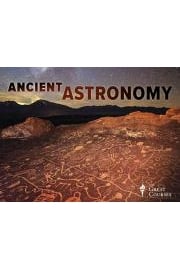In Season 1, Episode 15 of The Remarkable Science of Ancient Astronomy, titled The Lunar Crescent and the Islamic Calendar, viewers embark on a captivating exploration into the intricate relationship between astronomy and one of the world's most significant calendrical systems: the Islamic calendar. As ancient civilizations relied heavily on celestial phenomena to mark the passage of time, this episode sheds light on how the moon’s cycles have profoundly influenced cultural practices and religious observances throughout history.
The episode begins by delving into the foundational principles behind the Islamic calendar, a lunisolar system that is closely tied to the lunar phases. Viewers are introduced to the concept of the lunar crescent, the thin arc that appears shortly after the new moon. This delicate crescent not only symbolizes the beginning of each month in Islamic tradition but also serves as a powerful emblem in Islamic art and culture.
With stunning visuals of the moon in its various phases, the program highlights the significance that different cultures placed on these celestial markers, especially in the Arabian Peninsula. Through expert commentary from historians and astronomers, the episode illustrates how the sighting of the lunar crescent is both a scientific observation and an act of communal significance, necessitating the involvement of local communities in determining the beginning of each month in the Islamic calendar.
As the narrative unfolds, the episode provides context on the historical development of the Islamic calendar. It traces its origins back to ancient Arabia, where pre-Islamic cultures already showed an understanding of the moon’s cycles. The transition from a lunar-based system to one that synchronizes with the solar year is examined, providing insight into the challenges and adaptations that came along with establishing a uniform calendar that could be utilized across the vast Islamic world.
The show also considers the role of astronomical instruments used by ancient civilizations to observe meteorological patterns and celestial events. Instruments such as astrolabes and quadrant devices were key to tracking the positions of the moon and stars, and their designs are showcased alongside the knowledge systems that supported their use. Through intricate animations and expert interviews, viewers gain a better understanding of the technologies that were pivotal for early astronomers and their implications for calendar creation and maintenance.
The episode further engages with the cultural implications of the lunar crescent. It explores how the sighting of the moon not only marked religious observances such as Ramadan and Eid but also how it seeped into poetry, art, and folklore. Stories from various Islamic communities exemplify how the lunar crescent has been celebrated in festivals and art, serving as a bridge between the celestial and terrestrial realms, underscoring the profound influence of astronomy on daily life and spirituality.
Additionally, the episode examines modern implications of the lunar calendar in the contemporary Muslim world. Viewers will discover how scientific advancements have influenced the traditional practices of moon sighting and the adaptation of new technologies that play a role in calculations and predictions of lunar phases. This juxtaposition of ancient practices with modern technology provides a fascinating look at the evolution of astronomical science and its application in different contexts.
Throughout the episode, discussions around the interplay of religion, science, and culture frame the lunar crescent not merely as a scientific phenomenon but also as a pivotal element that unites communities across the globe. Interviews with Islamic scholars and astronomers highlight the diverse perspectives on lunar observations and the importance of community engagement in defining the timings of monthly observances.
By the end of this episode, viewers will have gained a broader appreciation for the intricate tapestry woven between astronomy and the Islamic calendar. The essential role of the lunar crescent stands out as a focal point of both scientific inquiry and cultural identity, showcasing how ancient knowledge systems continue to resonate in the modern era.
Combining captivating visuals, insightful interviews, and historical analysis, The Lunar Crescent and the Islamic Calendar invites audiences to contemplate the cosmos and the rich narrative that shapes the understanding of time within the Islamic tradition. This episode delivers a powerful message about humanity’s enduring relationship with the stars and the moon, calling attention to the ways ancient practices inform our lives today. Join us for this enlightening journey through time, culture, and the beloved celestial crescent that has guided generations.
-
Channel
-
First AiredJanuary 6, 2017
-
Content RatingTV-PG
-
Runtime28 min
-
LanguageEnglish
